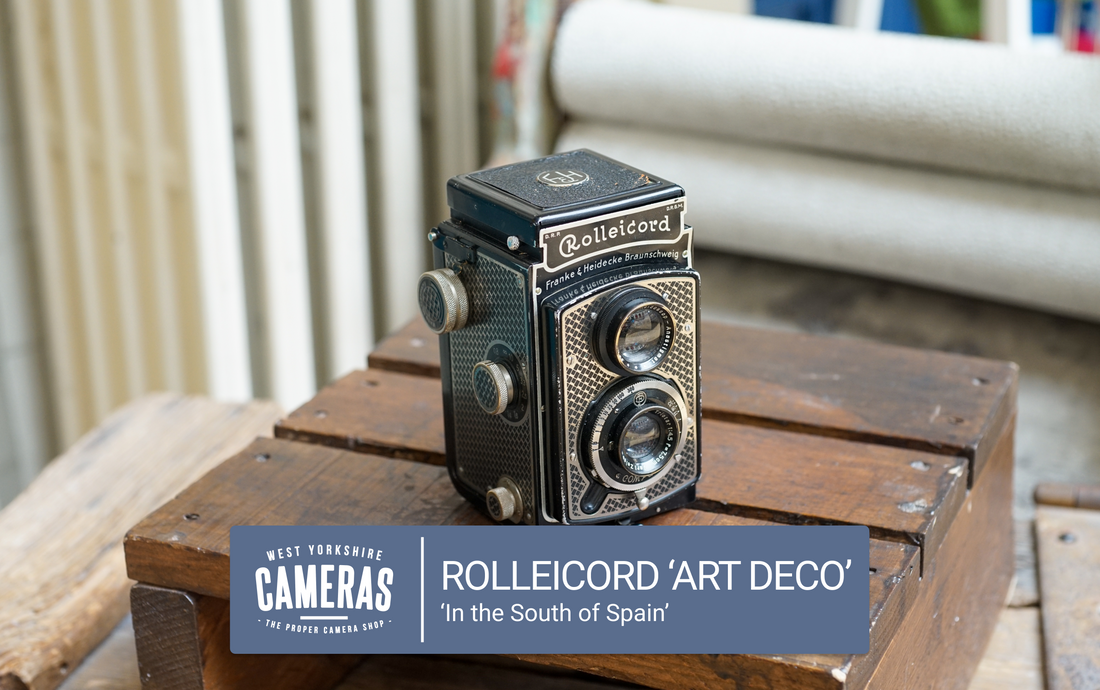By Ethan Delgado
Recently, I had the opportunity to shoot with the Rolleicord 'Art Deco' camera while travelling through the south of Spain to visit some family. This camera was first introduced in 1933, and it quickly became a favourite of photographers who were looking for a compact and affordable twin-lens reflex camera. Despite being almost 90 years old, the Rolleicord still holds up as a reliable and enjoyable camera to shoot with.

The Rock of Gibraltar - Kodak Portra 160.
Something important to mention is the look of this camera. With its intricate design of interlaced gold, reminiscent of Cuban Links, along with the vintage typography, it’s no wonder these are a hit with collectors. It makes for a beautiful camera. However, I did encounter some challenges while using it.

One of the most significant challenges that I faced while shooting with the Rolleicord was the frame spacing. Unlike modern cameras, which automatically space the frames evenly, the Rolleicord requires the user to manually advance the film after each shot. While this may seem like a minor inconvenience, I found it challenging to keep the spacing consistent, resulting in some frames being cut off at the start and finish of the roll.

A bright lifeguard post - Kodak Portra 160.
Another issue that I faced while using the Rolleicord was the dim focusing screen. Even in bright sunlight, it was difficult to see the image on the screen, which made it challenging to focus accurately. Additionally, the ruby window on the back of the camera, which is used to view the frame numbers, allowed some light to leak through, leading to some overexposed images. Speaking of the ruby window, it is aligned for 6x9 format instead of 6x6. This meant that (due to my own lack of research) I only got 8 frames instead of 12 on my first roll.

A dear friend - Kodak Portra 160.
Despite these challenges, shooting with the Rolleicord was a lot of fun, and it allowed me to slow down and really think about each shot. The camera's compact size made it easy to carry around, even when travelling - I found that it fits perfectly in my bag, along with a few rolls of film, my water bottle (necessary in the heat) and my jumbo size packet of Osem Bamba (if you know, you know).

'La Concha' - Kodak Portra 160.
I was particularly excited to shoot with the Rolleicord in Southern Spain, where I had the opportunity to photograph the rock of Gibraltar and the picturesque town of Maro. The warm, golden light of the region made for some stunning images, and the Rolleicord's Zeiss Triotar 75mm f/3.5 lens captured the vibrant colours of the landscape beautifully.

Overall, my experience shooting with the Rolleicord 'Art Deco' was both rewarding and challenging. While there were certainly frustrations that came with shooting with it, I enjoyed the process of slowing down and really thinking about each shot. If you're interested in slowing down, and trying something new, I would definitely recommend giving the Rolleicord a try.

Children on the beach, playing football - Kodak Portra 160.


